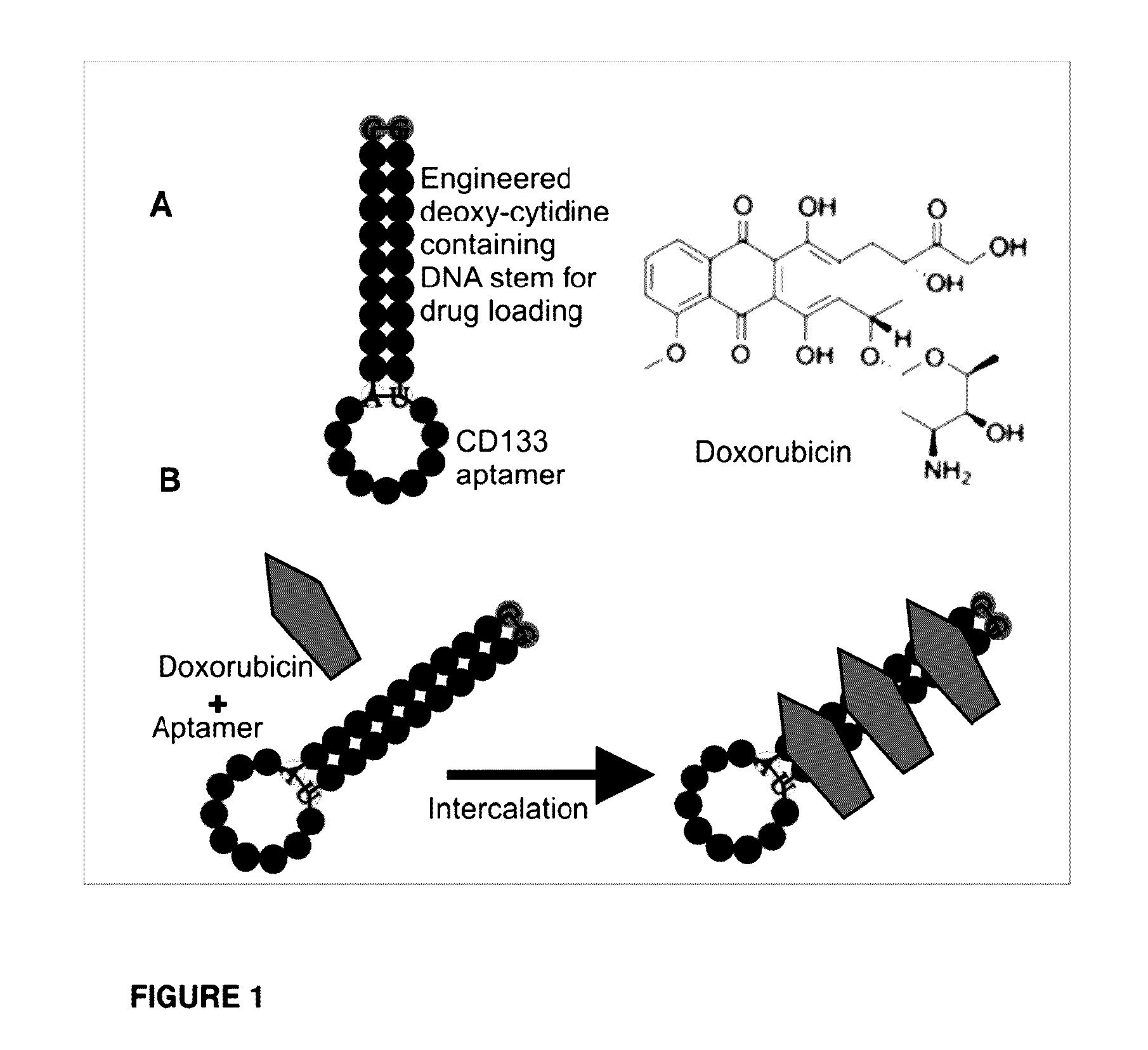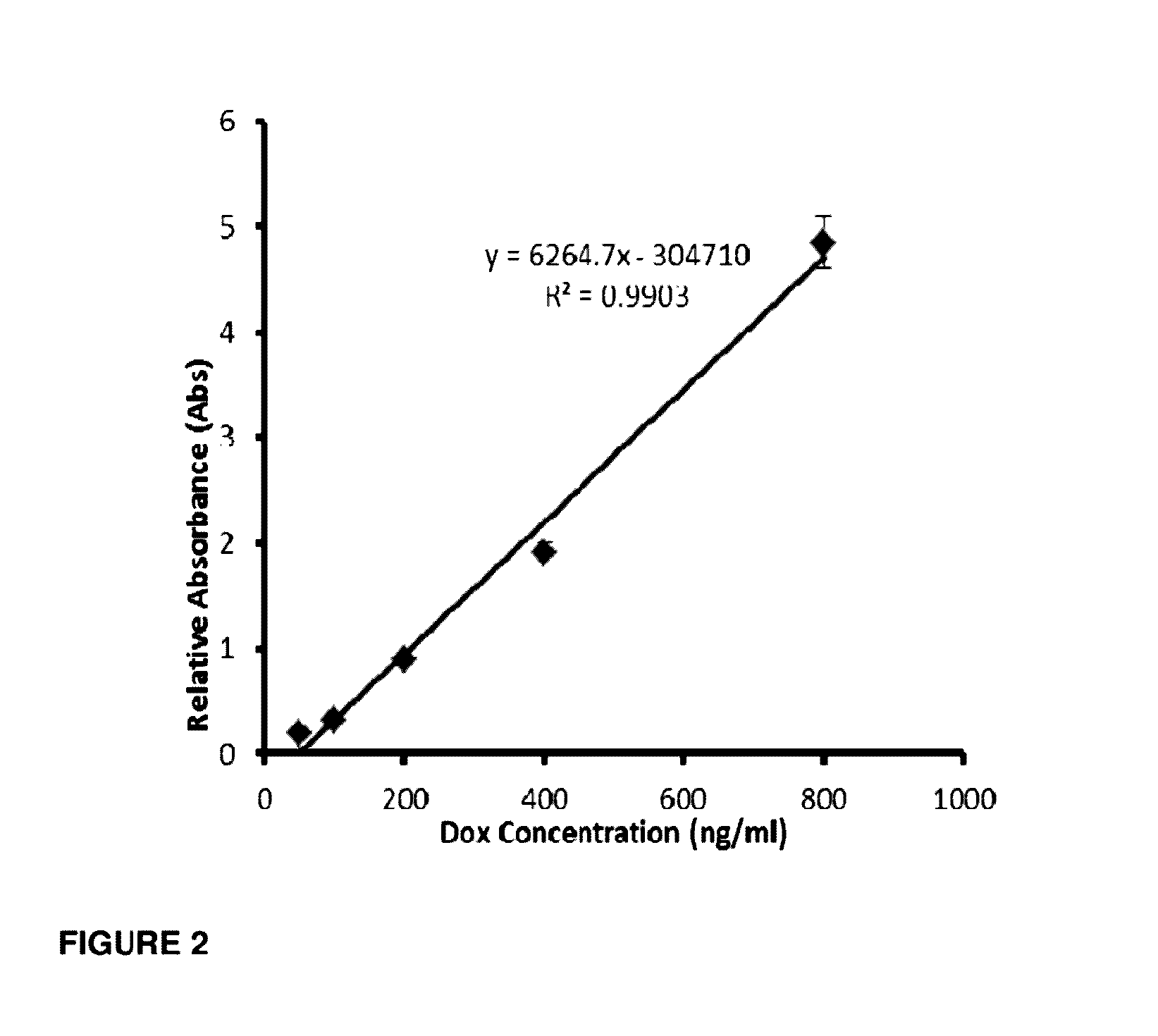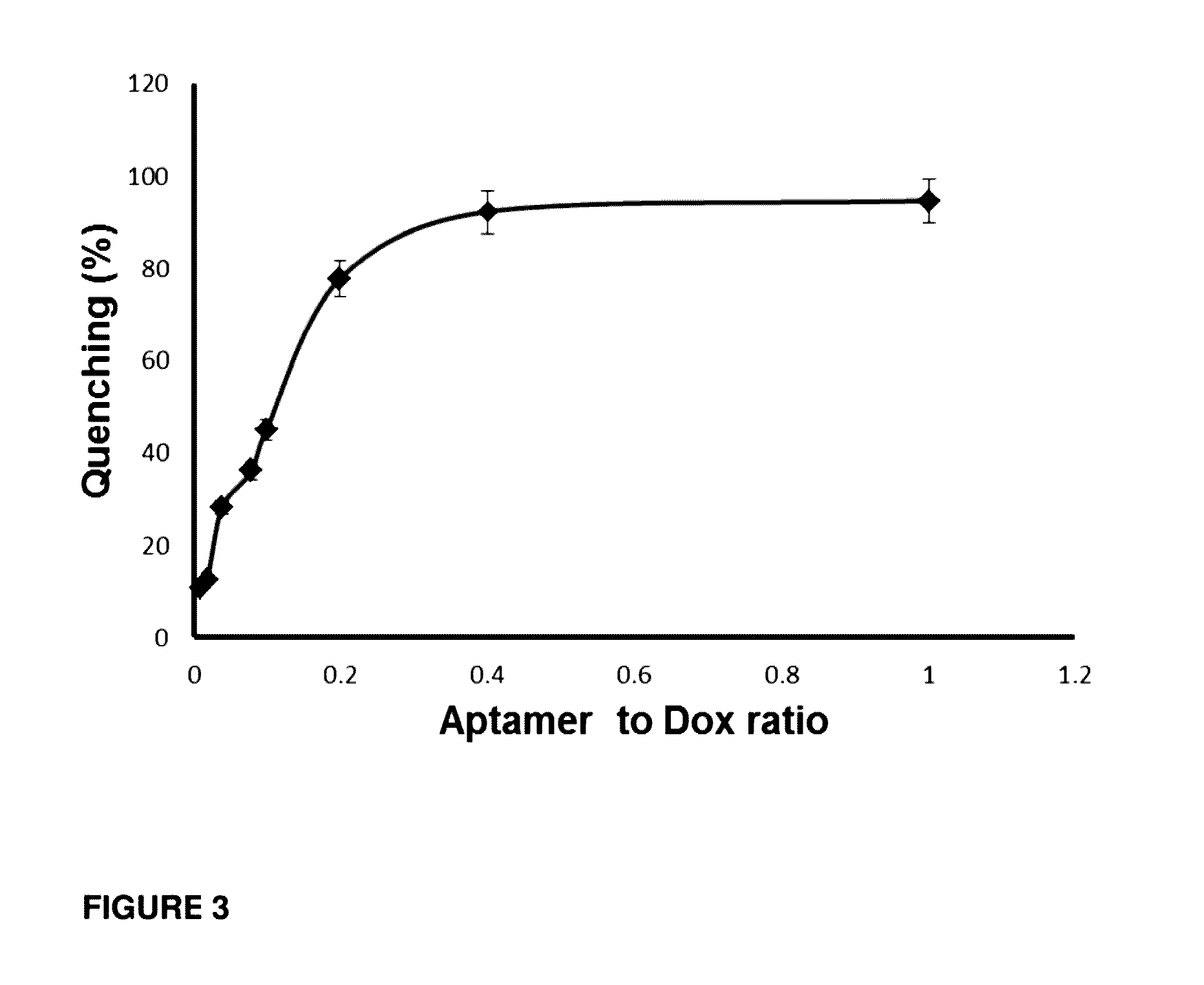Aptamer construct
- Summary
- Abstract
- Description
- Claims
- Application Information
AI Technical Summary
Benefits of technology
Problems solved by technology
Method used
Image
Examples
example 1
Conjugation of DOX with CD133 Aptamer
[0195]A major issue for current cancer therapeutics is the inability to targeting cancer stem cells (CSCs). In order to develop novel CSC-targeting agents, DOX, a commonly used chemotherapeutic drug that is unable to target CSCs on its own, was conjugated to an aptamer against CD133 cell surface marker. The ability of the conjugated aptamer to maintain functionality was tested by assessing the aptamer's binding affinity and specificity as well as the cytotoxicity of the drug.
[0196]The secondary structure of the CD133 aptamer was predicted using the VIENNA software (http: / / rna.tbi.univie.ac.at / ) (FIG. 1). The inventor had previously established that interaction between CD133 and the aptamer occurs via the loop of the aptamer (Shigdar S et al (2013) Cancer Letters 330:84-95). Furthermore, doxorubicin (DOX) is known to intercalate into G-C base pairing in DNA (FIG. 1B). Therefore, the RNA stem in the CD133 aptamer was replaced with a 10-bp DNA stem...
example 2
The In Vitro Stability of the DOX-Aptamer Conjugates
[0198]Controlled and sustained drug release is important for drug delivery systems. The inventor has previously shown that aptamers are internalized via endocytosis, possibly into the endosome and lysosome compartments that have a pH of 6.0 to 5.0 9 Shigdar S et al (2011) Cancer science 102:991-998. Therefore, the in vitro release profile of DOX from the aptamer-Dox conjugate in a pH range was investigated in PBS and PBS with foetal calf serum (FCS). As shown in FIGS. 4 and 5, the in vitro DOX release from aptamer-Dox was pH-dependent and exhibited a steadily continued release pattern with a little initial burst release. At pH 7.4 (the physiological pH found in the circulation system), minimal release of the intercalated DOX from the aptamer detected after 48 h in PBS. Similarly, DOX release from aptamer-Dox was much lower at pH 8.0. However, at a pH 5.0, the release of DOX increased dramatically in PBS. In order to mimic the condi...
example 3
Determination of the Equilibrium Dissociation Constant of Aptamer Conjugates
[0199]To determine whether the conjugation of DOX impedes binding affinity and specificity of the aptamer to CD133 the fluorescently labelled Cy5 aptamer-Dox conjugate was incubated with HT29 colorectal cancer cells and the equilibrium dissociation constant (KD) was determined via flow cytometric analysis (FIG. 6). CD133 aptamers used in the study of the dissociation constant are presented in FIG. 7.
[0200]Two cell lines, HT29 and HEK293T, were chosen for the study. HT29 expresses high levels of CD133, whereas HEK293 cell line does not express CD133 and was used as a negative control for the specificity of CD133 binding. As shown in FIG. 6A, the aptamer-Dox conjugate had negligible affinity to the negative control cells (HEK293T) since it displayed a KD of >1000 nM. To ascertain that CD133 aptamer binds to CD133 via specific molecular interaction rather than a non-specific binding between a nucleic acid and C...
PUM
| Property | Measurement | Unit |
|---|---|---|
| Fraction | aaaaa | aaaaa |
| Stability | aaaaa | aaaaa |
| Dissociation constant | aaaaa | aaaaa |
Abstract
Description
Claims
Application Information
 Login to View More
Login to View More - R&D
- Intellectual Property
- Life Sciences
- Materials
- Tech Scout
- Unparalleled Data Quality
- Higher Quality Content
- 60% Fewer Hallucinations
Browse by: Latest US Patents, China's latest patents, Technical Efficacy Thesaurus, Application Domain, Technology Topic, Popular Technical Reports.
© 2025 PatSnap. All rights reserved.Legal|Privacy policy|Modern Slavery Act Transparency Statement|Sitemap|About US| Contact US: help@patsnap.com



